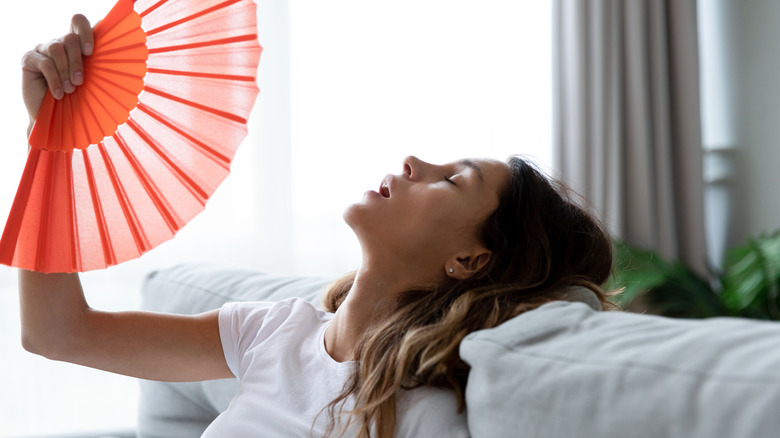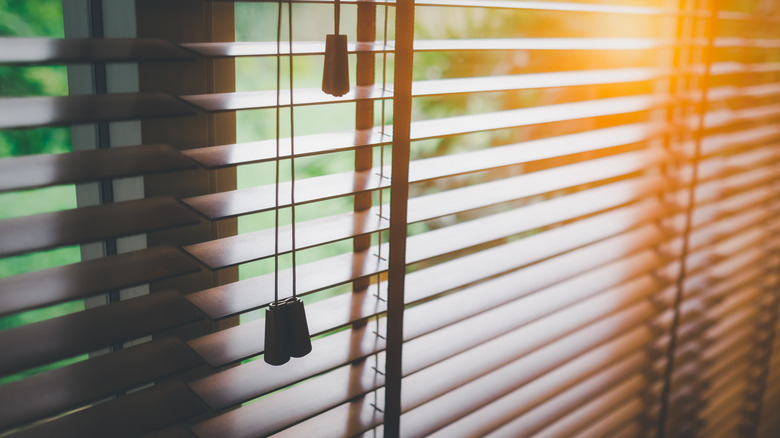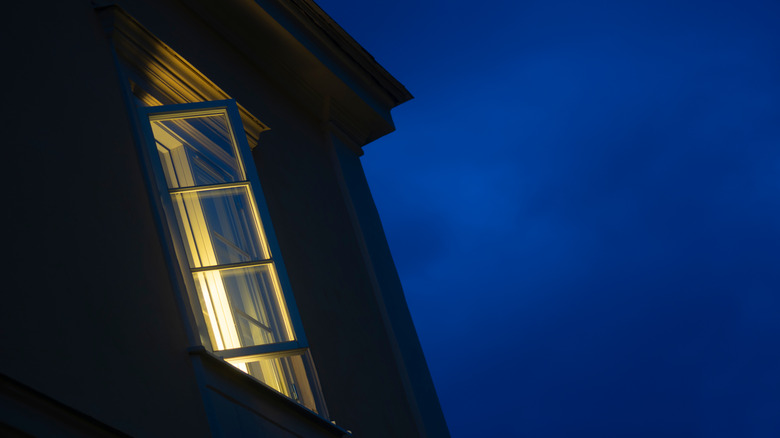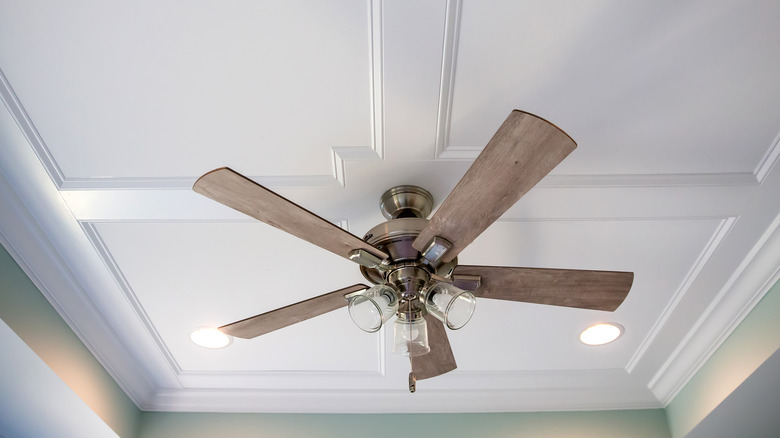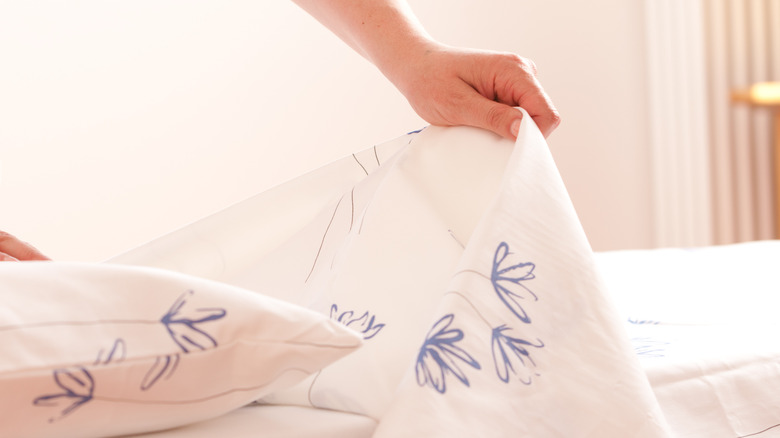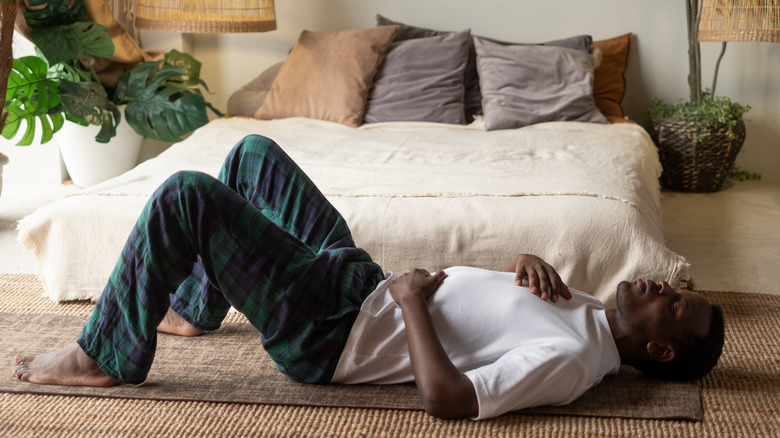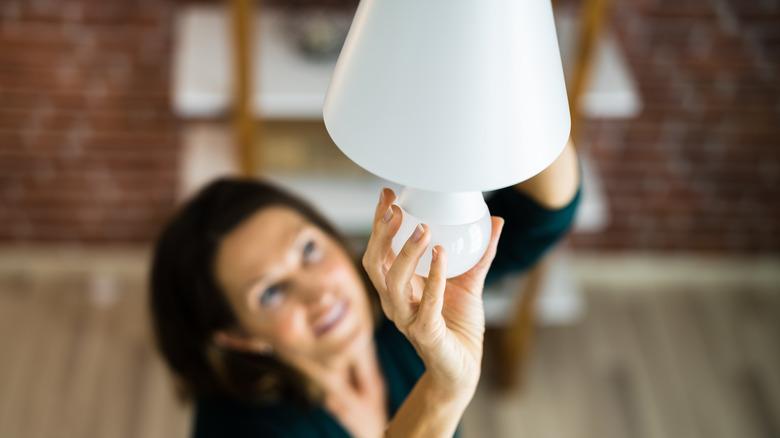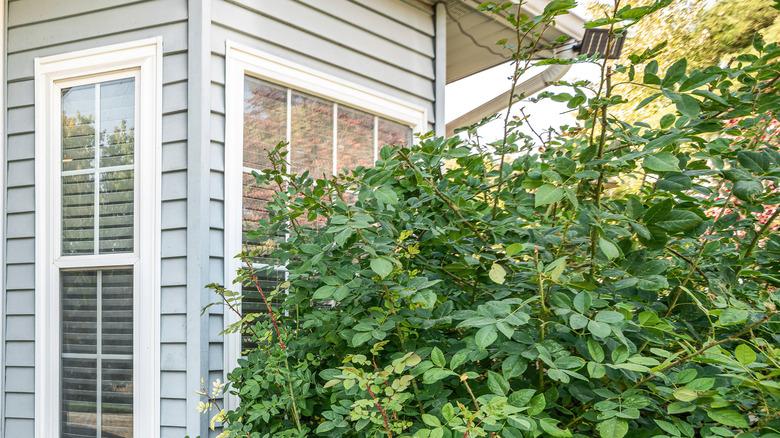Creative Ways To Cool Your Room Without Air Conditioning
When the warm months hit, it can sometimes feel like there's no escape from the heat. If you don't have the privilege of air conditioning, then it may take some creative thinking to keep yourself and your home cool. Luckily, it can be easy and affordable to perform a few tweaks around the house that will cool you down and lower the energy costs that would normally come with running an air conditioner.
From portable window air conditioner units to larger cooling systems, you can expect to burn anywhere from 750 watts to over 4,000 watts of energy every hour, according to Inspire Clean Energy. This could add upwards of $200 to your monthly utility bill. However, incorporating some of our tips will keep your home cool and just might save you on unnecessary expenses in the process.
1. Close your curtains or blinds during the daytime
A sure way to stop the temperature from increasing during the hottest parts of the day is to keep your curtains or blinds closed. This will prevent the sun's rays from entering your windows and heating the home. Depending on the fabric your curtains are made from or the material of your blinds, this could impact the amount of heat you can keep out. Mid-shaded curtains or white blinds can help to block up to 33% of the heat gained in the home, according to Consumer Reports.
2. Open windows at night
Once the sun has set and you no longer have the worry that the heat will turn your home into a sauna, you should open all your windows. This will allow the cool night air to pass through your home and hopefully lower the temperature. For security purposes, if you live in a house, keeping the windows on the second floor open is probably safer than the ones on the ground level. Then when morning comes, make sure to close the windows again before the sun hits its highest point.
3. Put ice in front of your fan
There is a super easy and effective way of hacking your fan at home and making it into a tiny air conditioner. Simply take a bunch of ice cubes, pop them into a bowl, place them in front of your fan, and keep them pointed towards you. The air will pass over the icy bowl and create a lovely cool breeze, according to Metro. For best results, stack the cubes so they can reach over the top of the bowl. You can also use frozen water bottles instead of ice cubes.
4. Check the rotation of your ceiling fan
Most people aren't aware that the rotation of your ceiling fan should change with the seasons. During the winter or fall months, your fan should be spinning clockwise. As the heat rises, this will push up the warm air and spread it throughout the room. However, to keep your room cool, set your ceiling fan to rotate counterclockwise. This will create a downdraft and circulate cool air around the home, as per Save on Energy. For optimal cooling, it is recommended that your fan blades be set at a 12-degree angle.
5. Change your sheets to lighter materials
Sleeping can be pretty difficult when it's really hot in your home. One way to help your bed remain as cool as possible is to switch the bedding you use. For colder months, it makes sense to surround yourself with thick cotton or flannel sheets to keep you cozy at night. However, when the temperature rises, make sure you change your sheets to thinner cotton, modal, bamboo, rayon, or even silk. These materials are light and made to be able to breathe better while also controlling moisture, according to Sleepopolis.
6. Keep your body temperature cool
As important as it is to keep your environment cool, the goal is to keep your body temperature comfortable at the end of the day. This can be as easy as placing a cold cloth or ice cubes on your pulse areas, such as the neck, wrists, or temples. According to Alberta, these areas are where blood vessels are closest to the skin, making them most effective for beating the heat. Munching on cold fruit like grapes or watermelon can be a nice soothing treat. Also, drink plenty of cold water to stay hydrated and help cool your body down.
7. Sleep in a low position
As the heat rises in your home, it could be a good idea to sleep as low to the ground as possible. According to the Sleep Foundation, people sleep better in cooler environments, and getting low to the ground can help. Luckily there are ways to make sleeping on your floor comfy. If you are an avid camper, then you might already have a good set of sleeping bags handy. If they're too warm, utilize them like a mattress and lay on top instead. Otherwise, placing blankets on the floor can help to cushion your body.
8. Change your light bulbs
In order to keep your home cool, you might want to think about changing your light bulbs. Ideally, having no lights running during the day could be a great way to save on energy costs and cool your house. However, if you need to have lights on during the day, make sure you aren't using filamented incandescent bulbs. These older types of bulbs tend to give off heat as well as light, according to UCSB Science Line. Switching to LED or CFL light bulbs could be more beneficial as they don't expel as much heat.
9. Avoid the oven
Everyone needs to eat, but on a hot day, there is nothing worse than working over a hot oven or stove. That's why cooking outdoors could be just the way to go on a hot summer day. Get that grill and move it into the shade because cooking on the outdoor barbecue can be the ideal way to keep your belly full without heating your home. If you have to cook inside, Avail recommends waiting until the night when the air is cooler.
10. Use the Egyptian sleeping method
A long time ago, before air conditioning or electric fans, the ancient Egyptians had an ingenious way of keeping cool on hot nights. According to Sleep Better, ancient Egyptians would take their sheets or blankets and lay them in cool water. Then they would wring out the excess water and sleep with the damp blanket on top of them. During the evening, the water would evaporate slowly, ensuring they stay cool throughout the night. You can do the same, but be sure the blanket is damp, not dripping wet and rest on a dry towel or blanket.
11. Make some improvements around the home
Once you have done everything you can inside the home to help cool down your environment, there are a few improvements you can make outside for sweltering days. According to The U.S. Department of Energy, 76% of the sunlight in your home transfers to heat. If your windows primarily face the sun throughout the day, you might want to consider placing large plants or trees outside. Not only will this look beautiful, but it can also help block out the sun. Also, awnings that hang outside over the windows can help reduce the amount of sunlight that pours through your windows.
